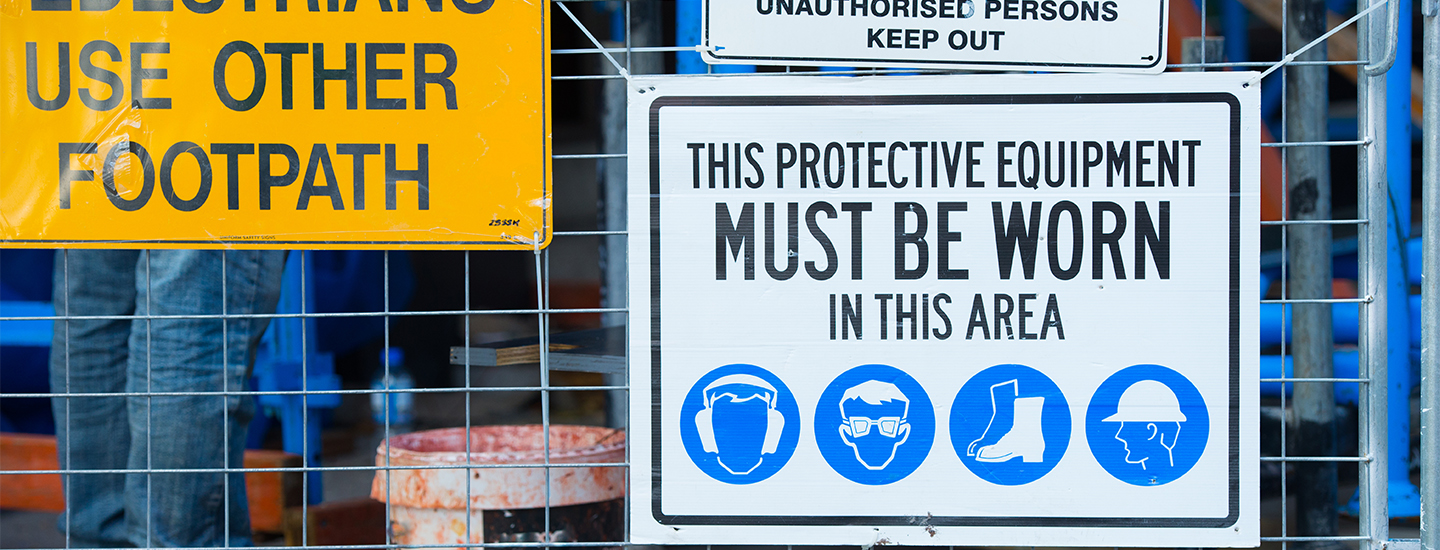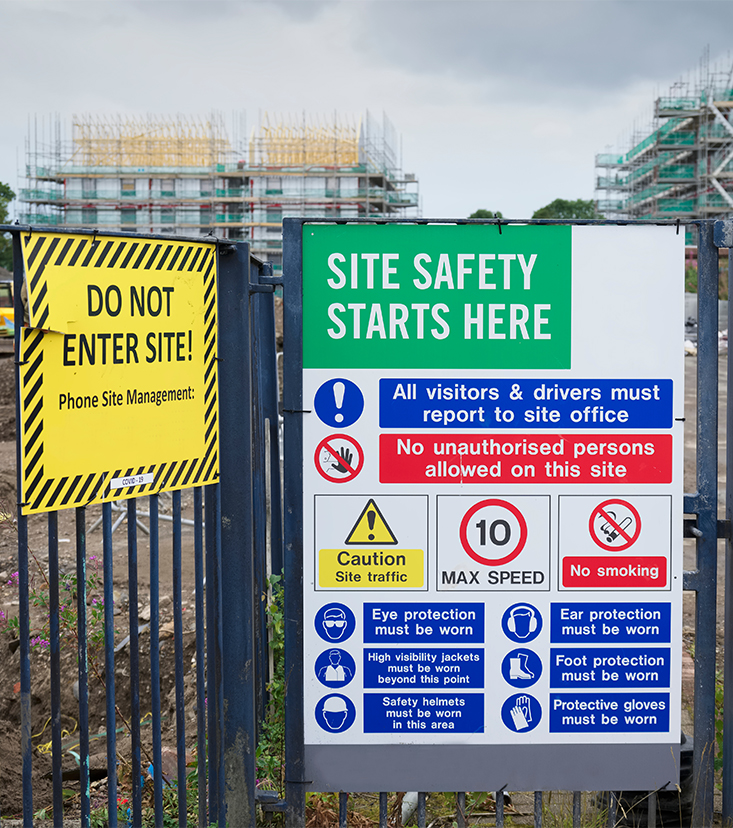
Customizable Construction Signage
A Comprehensive Guide to Its Multifaceted Role and Implementation

A Comprehensive Guide to Its Multifaceted Role and Implementation
Construction safety signage plays an indispensable role in the construction industry, serving as a multifunctional tool for safety, information dissemination, and branding. These signs are more than mere informational displays; they are critical components that ensure the smooth operation and safety of construction sites. Construction Safety Signs such as construction fence signage and other signs for construction sites provide clear, concise, and visible information to workers, visitors, and the general public, enhancing both safety and communication on-site.
Construction fence signage is paramount in communicating safety protocols and potential hazards, reducing accidents and ensuring the well-being of everyone on and around the construction site.
It acts as an informative guide, providing crucial details about the construction project, directional guidance, and other relevant information, aiding in navigation and awareness.
Construction signs serve as branding tools, offering visibility to construction companies and promoting services, upcoming projects, and company values.

Adhering to local, state, and industry regulations and standards is crucial when implementing Construction Safety Signs. Compliance ensures the legality, standardization, and effectiveness of the signs, avoiding legal repercussions and contributing to a safer construction environment. Regular updates and reviews of signage are necessary to align with changing regulations and construction progress.
Clear, concise messaging with high-visibility colors and impactful visuals ensures effective communication and leaves a lasting impression.
Durable materials and weather-resistant printing are crucial to withstand environmental conditions and maintain the sign's integrity and effectiveness.
Adherence to local regulations and industry standards is essential to ensure the legality and effectiveness of the construction signs.

Regularly assessing and updating signage is vital to maintain relevance and compliance with the ongoing construction phases and any changes in regulations.

Strategically placing signs at high-visibility locations ensures maximum impact and awareness, aiding in effective communication and safety.

Integrating technology, such as QR codes or digital displays, can enhance the functionality and interactivity of construction signage, providing real-time updates and additional information.
Construction signage is crucial for communicating safety protocols and potential hazards, ensuring the well-being of everyone on and around the construction site by reducing accidents and providing clear and visible information.
Effective construction signage design requires clarity, high visibility, durability, weather resistance, and legal compliance to ensure impactful communication, longevity, and legality.
Legal compliance ensures the legality, standardization, and effectiveness of construction signage, avoiding legal repercussions and contributing to a safer and more informed construction environment.
Understanding the multifaceted role, design principles, legal compliance, and effective implementation strategies of construction signage is crucial for construction professionals. By leveraging well-designed, compliant, and strategically placed construction signs, construction sites can become safer, more informed, and more brand-visible spaces, harmoniously integrating construction activities into the urban environment and enhancing the overall construction experience.